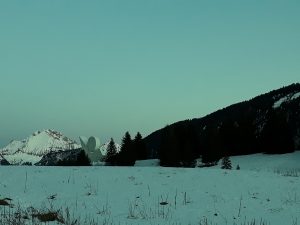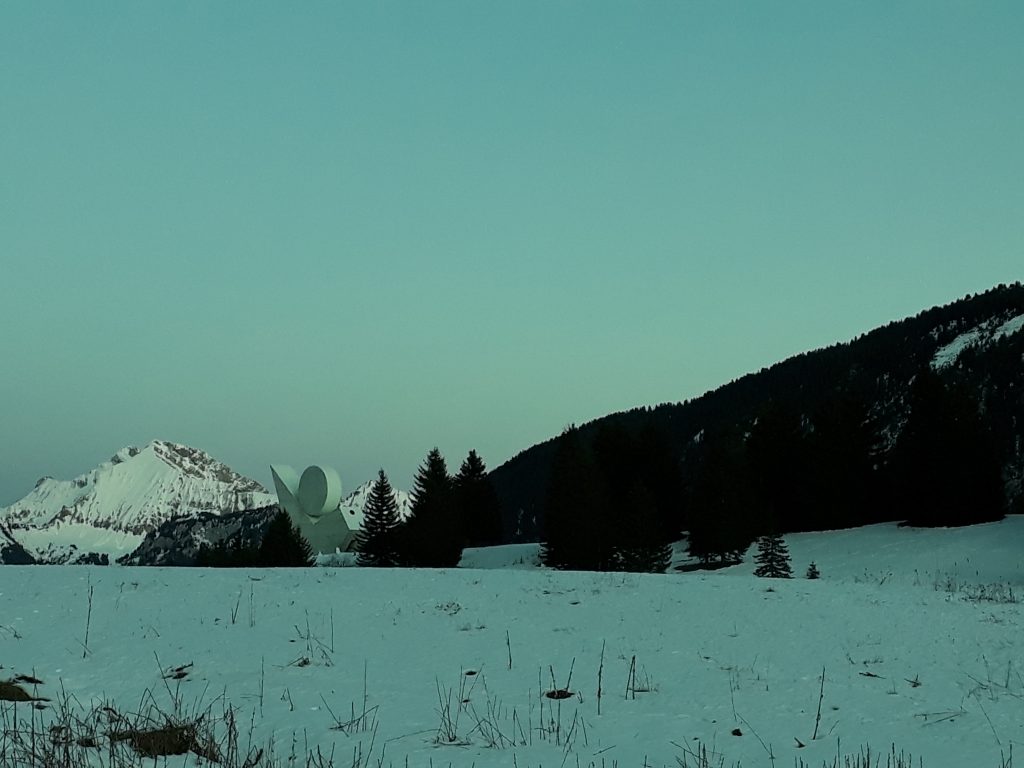The Glières Plateau is a limestone plateau in the Bornes Massif. Distant from La Roche-sur-Foron and Thorens-Glières by 29 km and 15 km respectively, it is located around the communes of Le Petit-Bornand-les-Glières and Thorens-Glières.
In the Francoprovençal language, glière means a rocky and sandy plateau without rivers. In the local speech, the word is found only in the singular. Following the events of March 1944, the journalist Dépollier spoke of Glière, in the singular. It was only after the Second World War that the name took on the majestic plural. Although some Savoyards still refer to the plateau as “Glières”, the majority now call it “les Glières”.
The plateau, located between the Auges mountains (1800m) and the Frêtes, is in reality a valley. Its mean altitude is 1450m and it is bounded by cliffs of Urgonian limestone. In fact the plateau has several levels.
The Glières Plateau was an important site of the French Resistance during the Second World War, its mountainous territory giving rise to a Maquis group of resistance fighters which was organized and led by lieutenant Tom Morel, Compagnon de la Libération. The plateau was chosen in January 1944 to accept British parachute drops of arms to supply the local resistance, then as a base of operations against the German rear to take place at the moment when the awaited landings by the allies would occur. The plateau was cut off, poorly accessible by road (and therefore by the enemy) but identifiable by allied aircraft through its proximity to Lake Annecy. The “battle of Glières” (March 1944) left 121 dead from the maquisards against almost 5000 soldiers from the Wehrmacht and the Vichy milice.
Although the British managed to carry out three parachute drops onto the plateau (of which a large one on the 10 March may have brought some 45 tonnes of weapons), the reinforcements promised by Captain “Cantinier”, the Free French envoy, never arrived.
On 31 January 1944, Morel occupied the plateau with 120 maquisards. By the end of February, he had approximately 300 men under his orders, whom he organized into three companies. Morel was distinguished by his talent as a leader and trainer of these men who had come from varied geographical, social and political backgrounds. He took up the doctrine of “live free or die”, and disciplined his battalion to turn it into unified and effective force in the fight for liberation. In February and March, numerous clashes occurred with the Groupe mobile de réserve (GMR) and with the Milice of the Vichy régime who were surrounding the plateau.
On 2 March, Morel decided on commando operation against the Beau Séjour hotel at Saint-Jean-de-Sixt where the GMR were stationed. Thirty of them were taken prisoner. They had to provide currency in exchange for Michel Fournier, medical student and auxiliary doctor for the maquis, who had been arrested at le Grand-Bornand several days earlier. The prisoners were freed but, in spite of the agreement on the honour of the Annecy police intendent, Fournier was not released.
Thereafter, the Maquis benefited from the arrival of 120 fighters from Chablais and Giffre. Morel decided to lead another operation, more significant and hazardous, against the staff of the GMR, “Aquitaine”, in Entremont at the foot of the Glières Plateau. Couret, officer of the peace and interim commandant of the GMR, had not performed his duties regarding the resistance, and his superior, commandant Lefebvre, who had arrived on 7 March, refused to speak to the Maquis. Over 100 men took part in the operation on the night of March 9–10. One of the groups, commanded directly by Morel, succeeded in taking the hôtel de France where the GMR staff was based. The maquisards disarmed their prisoners, but Lefebvre pulled out a concealed gun, and fired on Morel at close range, shooting him directly in the heart. Morel collapsed dead. Lefebvre was killed immediately.
Morel’s body was brought up to the plateau where he was buried on 13 March after a moving religious ceremony. On 2 May, his body was brought down to the valley, and he remains buried today in the Morette military cemetery, now the Glières en Haute-Savoie national necropolis.
In 1973, the national monument of the Resistance, created by the sculptor Émile Gilioli, was constructed in memory of the dead of the Resistance on a field offered for this purpose by Jean-François de Roussy de Sales. The monument was inaugurated on 2 September 1973 by André Malraux. The sculpture showed the sun held by a hand.
Cross-country skiing is today the main activity on the plateau in winter with over 36 km of groomed pistes alternative and skating, as well as now several kilometres of groomed pistes for walking.
The plateau is dotted with ancient farms and stables, some of which have been converted into restaurants or gîtes (Constance gîte being the most famous one Phone Number: 04 50 22 45 61)
Access is somewhat difficult; two winding roads are in use, neither being closed during winter.
But you will find some buses in the winter to drive you from Annecy train station.
A marked itinerary directs walkers around the plateau in summer, with numerous signs telling the visitor about Alpine life at the beginning of the 20th century and about the Battle of Glières, with the monument in honour of the Resistance.
There you can find two interesting plants; an orchid called “Sabot de vénus” and a blue thistle called “Reine des Alpes”.
Also you might see a deer, ibex, hare, wolf or a lynx…
Every year, the farmers are complaining about the wolves eating their goats or sheeps…
A famous French movie was shot there about this. https://fr.wikipedia.org/wiki/La_Jeune_Fille_et_les_Loups
Below photos of a little Sunday walk there with a bit of snow.


Above: Crocus flowers



Photos below: the inside of the memorial monument
















